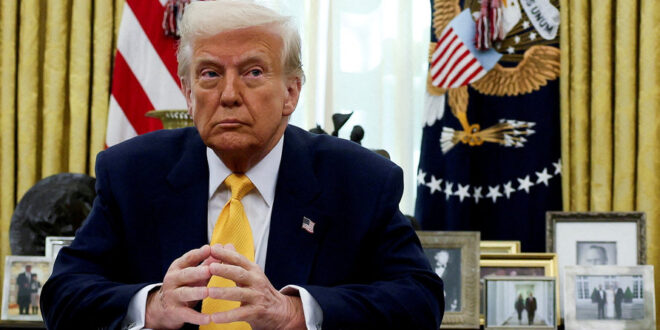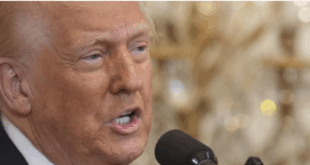Muhamad Yehia.. Cairo
The Trump administration must reinstate two board members who were fired, under a U.S. Court of Appeals for the District of Columbia Circuit ruling released on April 7.
Judges in the majority cited Supreme Court precedent that has established that certain board members have protection against firing without cause
Four judges dissented, with one saying she would have waited for the Supreme Court to weigh in.
That includes a 1935 ruling known as Humphrey’s Executor, in which justices said that Congress could curtail the president’s power to remove members of the Federal Trade Commission unless there was just cause, such as neglect of duty.
Justices in several more recent rulings concluding that laws imposing restrictions on removing the single heads of agencies that exercise executive powers are unconstitutional specified that they were not disturbing the precedent pertaining to members of adjudicatory boards.
“The Supreme Court has repeatedly told the courts of appeals to follow extant Supreme Court precedent unless and until that Court itself changes it or overturns it,” the majority of the District of Columbia court said on Monday.
“If a precedent of the Supreme Court ‘has direct application in a case,’ lower courts ‘should follow the case which directly controls,’ leaving to the Supreme Court ‘the prerogative of overruling its own decisions,’” it added, citing previous rulings that outlined the principle
White House officials fired Wilcox in January and Harris in February, communicating in brief emails that they were acting on behalf of President Donald Trump.
The email to Wilcox quoted Trump saying that, in his judgement, “the National Labor Relations Board is not presently fulfilling its responsibility to the American people.” The president said he was replacing Wilcox and another member in order to ensure his administration’s aims and purposes are carried out effectively, citing decisions that he said exceeded federal law, including their support for an employment rule that courts later invalidated.
Harris’s email did not list a reason for his termination.
Both fired members sued, leading to rulings in their favor that required reinstatement.
The full court on Monday not only vacated the stays on the lower court orders, but denied the government’s emergency motions for stays pending appeal, which would have held in abeyance the court’s order until the Supreme Court acts.
“The Supreme Court’s repeated and recent statements that Humphrey’s Executor and Wiener remain precedential require denying the government’s emergency motions for a stay pending appeal,” the majority said.
The majority consisted of Circuit Judges Sri Srinivasan, Patricia A. Millett, Robert L Wilkins, J. Michelle Childs, Florence Y. Pan, and Bradley N. Garcia.
Four judges dissented
“We do the parties (especially a functioning executive branch) no favors by unnecessarily delaying Supreme Court review of this significant and surprisingly controversial aspect of Article II authority,” Circuit Judge Karen LeCraft Henderson wrote in a dissent. “Only the Supreme Court can decide the dispute and, in my opinion, the sooner, the better.”
Circuit Judge Neomi Rao wrote separately that recent Supreme Court decisions have “substantially eroded” Humphrey’s Executor and the 1958 Weiner ruling.
“While statutes provide for-cause removal protections for Harris and Wilcox, these restrictions are likely unconstitutional because they interfere with the President’s authority to remove principal officers who execute the law,” she said.
 موقع وجه أفريقيا موقع وجه أفريقيا هو موقع مهتم بمتابعة التطورات في القارة الأفريقية
موقع وجه أفريقيا موقع وجه أفريقيا هو موقع مهتم بمتابعة التطورات في القارة الأفريقية



